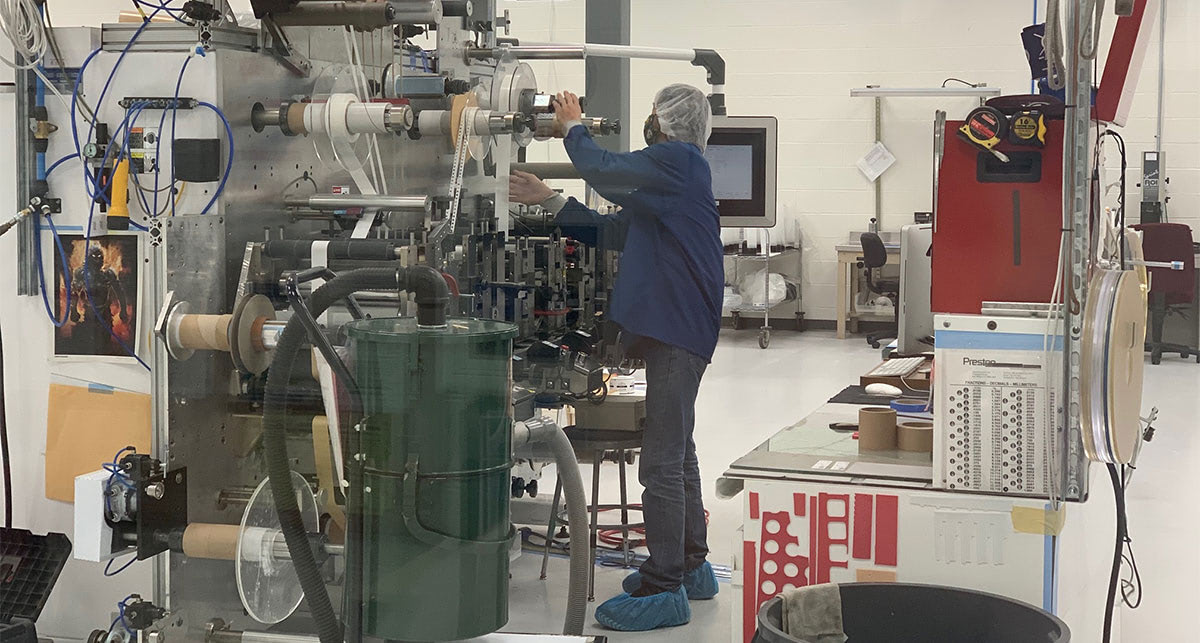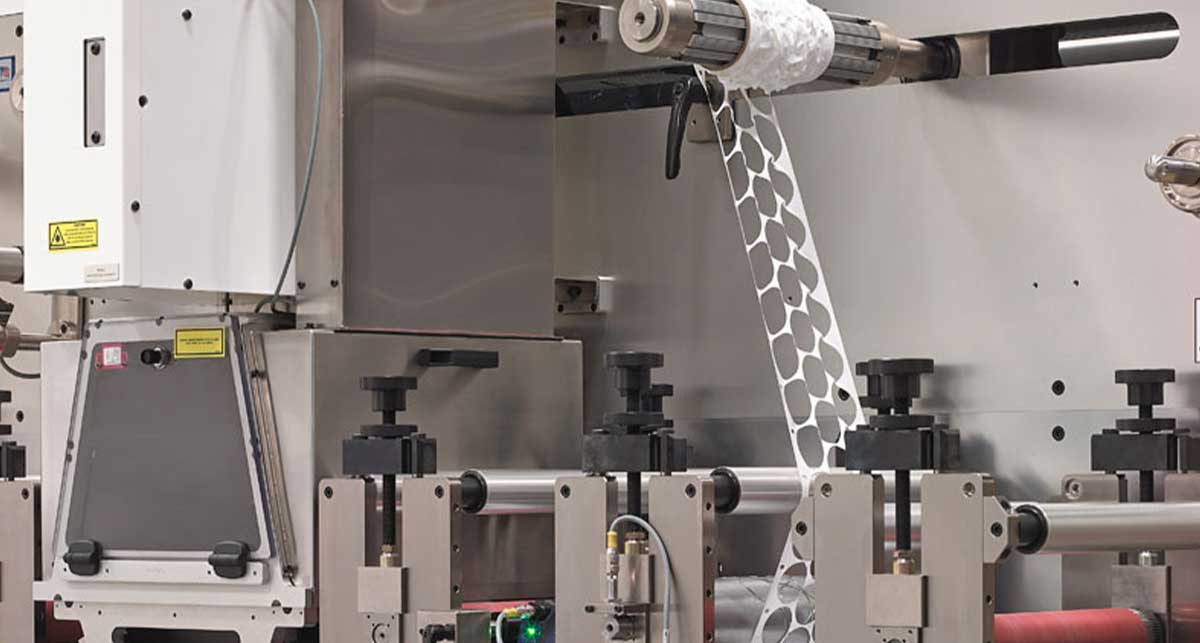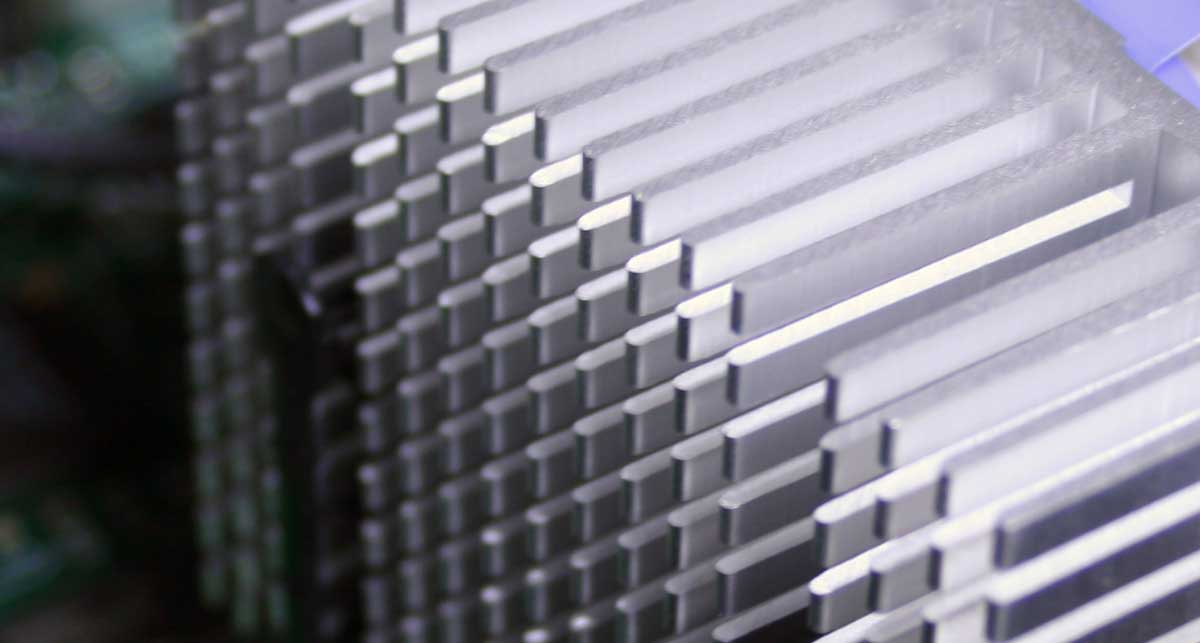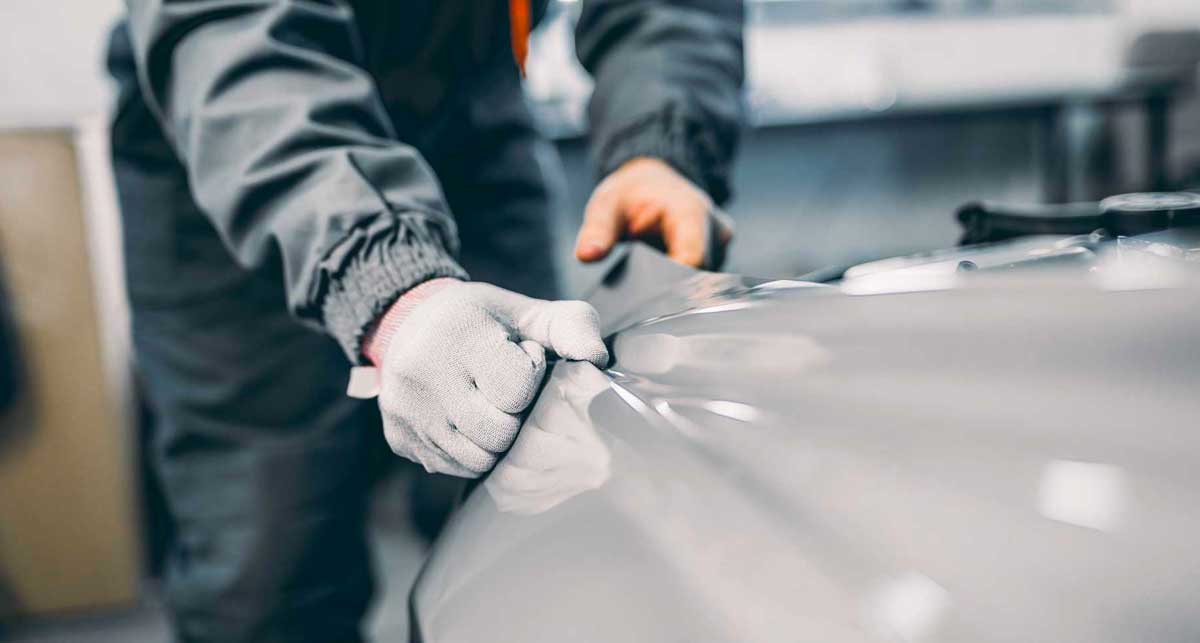Although you’re long past the days of giving the TV a couple of good smacks to make the static go away, that doesn’t mean that electromagnetic interference has disappeared completely.
On the contrary, the level of electronic interference in the world around us has only increased, but with higher protective regulations and better EMI shielding against disturbances, EMI is less noticeable on a day to day basis.
By now, you might be wondering how EMI shielding works and why it’s considered essential. At Strouse, we’ve helped build many of our clients’ complex EMI shield components.
If you’re hoping to learn more about EMI shielding and its importance, then sit tight, because we’ve got plenty of information that will help you make informed decisions about EMI shield design and manufacturing in the future.
What is Electromagnetic Interference?
EMI occurs when electromagnetic energy from an external source affects an electrical system. The disruption can range anywhere from minor interruptions to severe damage.
In 1859 there was little in the way of electronic technology other than telegraphs. At the time, there was no such thing as EMI shielding. So when a huge solar flare crashed into Earth, it generated enough EMI to stop communications by causing severe damage to telegraph stations and sending multiple operators electric shocks.
Of course, with the possibility of an event like that, our modern understanding of EMI interference has led us to install protective measures like shields into many of our devices.
EXAMPLES OF EMI
Cell phones can interfere with the sensitive equipment of an airplane, which is why the crew asks you to turn them off during takeoffs and landings. Alternatively, phone static is often caused by EMI due to a nearby, low-flying plane or some other disturbance.
Loud noises from a microphone are often caused by cell phones communicating with a tower during a call. Basically, even something as simple as an electric egg beater can interfere with a radio signal.
EMI VERSUS EMC
EMC stands for electromagnetic compatibility, which means an item has electromagnetic shielding that prevents its energy waves from affecting other devices. Most household electronics get rated for EMC, including TVs, laptops, cell phones, tablets, etc.
What Is Electromagnetic Energy?
Electromagnetic energy is radiant energy expressed in waves that travel through space at the speed of light. It's everywhere and comes in many forms.
TYPES OF ELECTROMAGNETIC ENERGY
Each type of energy has a unique use, frequency range, and wavelength.
RADIO WAVES:
- Uses: Voice communications, data transfers, radio broadcasting
- Frequency Range: 3 Kilohertz (kHz) to 300 Gigahertz (GHz)
- Wavelength: 10 millimeters (mm) or longer
MICROWAVES:
- Uses: Heat sources for microwave ovens, communications over high bandwidths, radar
- Frequency Range: 3 GHz to 30 Terahertz (THz)
- Wavelength: 10 mm to 100 micrometers (μm)
INFRARED:
- Uses: Heat-sensitive thermal imaging, heat sources, therapy
- Frequency Range: 30 THz to 400 THz
- Wavelength: 100 μm to 740 nanometers (nm)
VISIBLE LIGHT:
- Uses: Light sources for visibility, lasers, electronic screens
- Frequency Range: 400 THz to 800 THz
- Wavelength: 740 nm to 380 nm
ULTRAVIOLET WAVES OR SUNLIGHT:
- Uses: Microbe elimination, Sterilization, UV lamps for tanning beds
- Frequency Range: 8 × 10^14 Hertz (Hz) to 3 × 10^16 Hz
- Wavelength: 380 nm to 10 nm
X-RAYS:
- Uses: Internal medical examinations, art, quality control
- Frequency Range: 3×10^16 Hz to 3×10^19 Hz
- Wavelength: 10 nm to .01 nm
GAMMA-RAYS:
- Uses: Cancer treatments, Nuclear warfare, Aerospace telescope technologies
- Frequency Range: More than 10^18 Hz
- Wavelength: Less than 10 picometers (pm)
When trying to prevent EMI, it's crucial to understand what type of energy you want to block. Different materials are more effective at stopping certain kinds of energy.
Additionally, if you use a perforated shielding medium, you must ensure the holes aren't large enough for the energy waves to escape.
What Is EMI Shielding?
Electromagnetic shielding is a barrier that covers electronics to prevent EMI. It is also sometimes referred to as radiation shielding.
RF SHIELDING AND MAGNETIC SHIELDING
EMI shielding is the umbrella term that encompasses all types of EMI. RF shielding and magnetic shielding are two sub-types of EMI shielding.
RF shielding is specific to the blocking of radiofrequency electromagnetic radiation. Shields effective at blocking RF and other types of waves are sometimes called EMI/RFI or EMF shields.
Magnetic shielding is different since you can't block a magnetic field the same way you can electromagnetic energy. This is because a magnet's field lines run from its north pole to its south pole, and monopole magnets don't exist.
Instead, you must redirect the magnetic field lines. You can achieve this by separating two magnets with a magnetic barrier.
When doing so, the magnetic field lines of the magnets will interact with the barrier. This causes the lines of both magnets to bounce back before reaching the magnet on the other side. Because the magnetic lines of the magnets can't interact, their impact on each other is either decreased or nullified.
Much of today's technology requires magnets to work. Like EMI, you must prevent magnetic interference, or it can impede the operation of other magnetic devices. Some shields combine conductive and magnetic mediums to prevent interference from both EMI and magnetism.
SKIN EFFECT AND SKIN DEPTH
Alternating currents tend not to go through the center of a solid conductor. Instead, they travel closer to the surface in what’s referred to as the skin effect.
Skin depth is how far underneath the surface of a conductor a current will travel and decrease as frequency increases.
In an EMI shield, you want a material with enough skin depth to prevent a frequency from penetrating. You can determine skin depth with this calculator.
WHY IS SHIELDING IMPORTANT?
As 1950s Sci-Fi predicted, everywhere we turn, there are electronic devices. Yet, one of the topics that wasn’t covered in your high school reading of Fahrenheit 451 is that each device can interfere with another if it isn't properly shielded.
Without shielding, electronics wouldn't function as designed or may even stop working altogether. The main goal of an electromagnetic shield is two-fold. It isolates a device's energy so it doesn't affect anything else and blocks external energy from getting in.
EMI shielding is essential because it can prevent:
BROWNOUTS AND BLACKOUTS
Brownouts are any type of partial service outage, while a blackout is a full outage. Brownouts and blackouts are not limited to power outages.
ELECTRICAL FAST TRANSITIONS OR EFTS
If a power outage and a transfer sequence are in place, you'll start receiving power from a generator. When this happens, it's called an EFT. If there is an EMI, you can experience unwarranted EFTs.
STATIC ON PHONE LINES
If you were to remove the plastic jacket from a phone line, you'd see another layer covering the wires. This second layer is usually a metallic foil or metallic plaited braid that protects the lines against EMI. It is a type of RF shielding that reduces static during phone calls.
POWER FAULTS
A power fault is any abnormality in an electrical current. Short circuits are an excellent example of a power fault, but not the only kind. Power faults are sometimes caused by an EMI.
6 Types of EMI Shielding Materials
There are many types of EMI shielding materials, and new materials are constantly being introduced.
When deciding which shielding material to use, you need to consider shielding effectiveness (SE). SE is the intruding electric field's strength compared to a device's electric field. Shielding effectiveness is measured in decibels (dB).
This Shielding Effectiveness Calculator can help you determine your specific needs.
1. ALUMINUM
Aluminum is a cost-effective shielding material for ultra- to super-high radio waves. Its high conductivity and strength-to-weight ratio make it an excellent choice for EMI shielding. Remember that aluminum is non-ferrous, so you can't use it to block magnetic forces.
Additionally, fabricating EMI shields of aluminum presents some challenges as it is difficult to solder. You'll also have to keep an eye on any shield made of aluminum, as it can corrode over time.
2. COPPER
Copper is a very versatile metal. It's highly conductive, capable of blocking radio waves and magnetic waves. This makes it an ideal choice for applications requiring all three shielding types. Copper's malleability means you can use it in a wide array of devices.
It's also easy to combine with other metals to form alloys like brass, making it even more adaptive. Copper's only real drawback is its price tag compared to other materials.
3. STEEL
Steel's strength and durability made it a prime candidate for early EMI and magnetic shielding.
It's not very versatile and is effective at blocking low-frequency waves only. Its rigidity makes it difficult to work with when used in tight spaces. You could use thin steel sheets instead, but the sheets often deform under pressure when sealing the shield.
For these reasons, steel is less used as technology advances and new alloys are created. If you opt for a steel shield, carbon and stainless steel are the most effective.
4. NICKEL
Nickel is both inexpensive and effective. It's durable, rigid, and conductive. You can use nickel as an EMI shield on its own or combine it with other metals to form magnetic alloys.
5. MU-METAL
Mu-metal is a new alloy designed for EMI shielding. Nickel and Iron are the main elements of Mu-metal, making it both soft and magnetic.
It can block both electronic and magnetic fields and is very permeable. Because of its malleability, Mu-Metal can be easily worked into thin sheets for efficient application.
6. CONDUCTIVE RUBBERS LIKE SILICONE AND NEOPRENE
Silicone has a very high tensile strength. It is also flexible and resilient. Neoprene is compressive and generally useful.
Conductive rubbers are often used to make sealing EMI shielding gaskets that seal enclosures.
Types of EMI Shield Devices
There are almost as many kinds of EMI shield devices as there are applications for them. You can get solid and perforated shields for most material and design types.
EMI ENCLOSURES
EMI Enclosures are the simplest type of shield. They create a Faraday cage effect by surrounding the equipment it protects.
Faraday cage enclosures are bulky and add weight to a device, making them impractical for small devices like phones tablets, and computer components.
Enclosures come in solid and perforated forms, depending on the application. For example, a microwave uses a perforated enclosure so you can see inside, but the holes are too small for the waves to escape.
EMI gaskets of conductive rubbers or metals can shore up gaps between enclosures and equipment. Gap-sealed enclosures provide more comprehensive protection.
EMI COATINGS
EMI Coatings are almost like paint mixed with conductive metals that form a shield. Coatings are very flexible because you only need to brush them onto a surface for them to work. Unlike other shielding options, they also take up no extra space and have no added weight.
On the downside, it only takes a single scratch to compromise the protection.
EMI FILTERS
EMI filters block high frequencies while allowing low frequencies to pass through. As a rule, they get built into the power sources or switches they protect.
Because filters don't block all EMI, you can only use them in certain situations.
FOIL SHIELDING TAPE
Foil shielding tape uses thin pieces of conductive metal with an adhesive to shield electronics.
Tapes are flexible, easy to use, and form-fitting. You can cut them into any size or shape, and they weigh next to nothing. These qualities make them an excellent choice for EMI protection when working with small electronics.
Because you can customize tapes to fit your equipment perfectly, there is less waste saving you money. You can also use their versatility for anti-static masking, mechanical protection, static charge grounding, and component cushioning.
Additionally, you can get foil tapes in almost any type of metal. Some options include:
- Aluminum
- Copper
- Lead
- Silver
- Stainless steel
When buying tape, consider tensile strength to avoid damaging the shield.
CONDUCTIVE FABRIC SHIELDS
Conductive fabric isn't fabric in the traditional sense. It's more like a metallic textile with similar physical properties to that of fabric.
It either uses a fabric substrate like nylon or polyester combined with metal or nothing but metal. Like fabric, it drapes and is easy to work with. You can add an adhesive to help hold it in place or hang it over the equipment you intend to protect.
To increase effectiveness, you can add an elastomer core to the fabric, but even with that addition, it is still among the weakest shield options available. For this reason, you should only use conductive fabrics when you only need moderate protection.
You must also watch for surface corrosion when working with metallic fabrics.
Pursuing EMI Shielding
Now that you know more about EMI, you might be thinking about your own project applications you’re hoping to get shielded. But where can you begin?
Firstly, recognize that it’ll likely take some trial and error before you can decide upon a suitable material and design for the most effective EMI shield.
Then, once you’ve got a basic design down, you’ll be ready to contact a converter for a project consultation or reach out to get a sample. These options will help you get your hands on trustworthy material as well as get you started on your journey toward a fully tested and effective EMI shield.
If you are still determining if foil tapes are the right solution for your EMI concerns, or you have any questions about our offerings, feel free to contact us anytime.
Originally published: December 30, 2019
.jpeg?width=290&name=0%20(1).jpeg)








